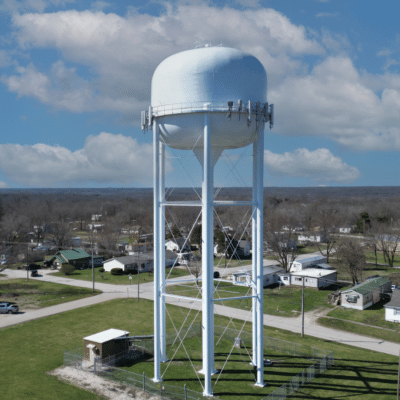Understanding Water System Hydraulic Modeling
Hydraulic modeling is a crucial aspect of water engineering that enables the analysis and simulation of water networks. Hydraulic modeling software uses mathematical formulas and algorithms, along with physical data (elevation, pipe diameter, water level, etc), to predict how water flows through pipes, pumps, valves, and storage tanks, and how it is distributed throughout a community. A well-developed hydraulic model offers a detailed representation of a water distribution system, allowing for improved decision-making regarding pressure management, water storage, and infrastructure investment.
What Does a Hydraulic Model Include?
A hydraulic model encompasses various components of a water system, including:
- Pipes and their dimensions
- Pumps and their operational characteristics
- Valves and their settings
- Water storage facilities, such as tanks and reservoirs
- Customer demand patterns
- Fire flow requirements
The Role of Calibration in Hydraulic Modeling
Calibration is the process of adjusting the hydraulic model so that its output closely matches the observed data from the real-world system. This step is critical for ensuring the model’s accuracy and reliability.
Why Calibration Matters
Without proper calibration, a hydraulic model is merely a theoretical representation that may not reflect the actual performance of the water system. Calibration aligns the model with the reality on the ground, taking into account factors such as pipe roughness, pump efficiencies, and actual flow rates.
How Calibration is Performed
Calibration involves collecting field data, such as pressure readings and flow rates from various points in the system, and using this data to refine the model. Field tests are typically done using hydrant testing throughout the water network. The calibration process in the hydraulic modelis an iterative process continues until the model’s predictions are consistent with the field observations.
Benefits of a Properly Developed Hydraulic Model
A well-calibrated hydraulic model is a valuable asset for water utilities and can lead to numerous benefits in the short and long term.
Improved Pressure Management
Effective pressure management is essential for reducing leaks and breaks in the system, extending the life of infrastructure, and providing consistent service to customers. A hydraulic model allows for the analysis of pressure zones and the identification of areas that may require pressure reducing valves or other adjustments.
Enhanced Fire Protection
Hydraulic models can be used to simulate fire events, helping to ensure that the water system can deliver the required flow and pressure for fire protection. This includes testing the capacity of fire hydrants and assessing the adequacy of water storage during emergencies.
Informed Capital Improvement Planning
Water utilities face the challenge of maintaining and upgrading their infrastructure within budget constraints. A hydraulic model aids in capital improvement planning by identifying critical needs and prioritizing projects based on their impact on system performance.
Accurate Future Planning
As communities grow and change, water systems must adapt. Hydraulic models facilitate future planning by allowing engineers to test the effects of new developments, increased demand, or changes in supply on the water system.
Criticality Analysis for Resilience
Understanding which parts of the water system are most critical to its operation helps in building resilience. Hydraulic modeling can assist engineers in conducting a criticality analysis to identify key components and develop contingency plans for their failure or disruption.
Implementing a Water System Hydraulic Model
The development and implementation of a hydraulic model requires a systematic approach and collaboration among various stakeholders.
Data Gathering and Model Building
The first step is to gather comprehensive data on the water system, including geographic information system (GIS) data, maps, as-built drawings, operational records, water sales data, tower levels, and data from supervisory control and data acquisition (SCADA) systems. This information is then used to construct the initial model.
Field Verification and Calibration
Once the model is built, field verification is carried out to collect real-time data for calibration. This ensures that the model accurately represents the system’s current state.
Regular Updates and Maintenance
A hydraulic model is not a static tool; it must be regularly updated to reflect changes in the water system, such as new connections, pipe replacements, and changes in demand patterns.
Conclusion: The Value of Precision in Water Management
In conclusion, a properly developed Water System Hydraulic Model is an indispensable tool in modern water management. It helps provide the data needed to manage complex water systems effectively, ensuring that communities have access to safe, reliable, and sufficient water supplies. By investing in hydraulic modeling, water utilities not only improve their current operations but also lay the groundwork for sustainable water management practices that will serve future generations.

Cole Prevost, PE

Cole Prevost, PE
Learn More
Learn more about McClure’s Water & Wastewater services or contact us at info@mcclurevision.com.



















